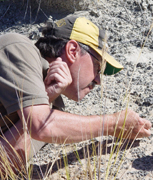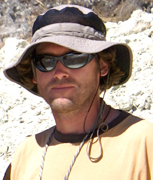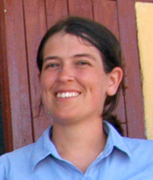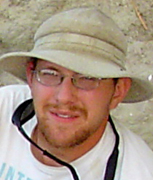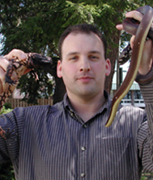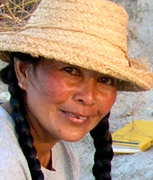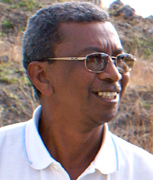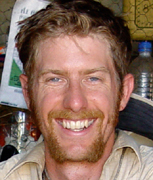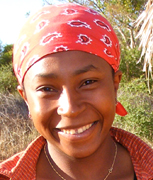The Mahajanga Basin Project (MBP), since its inception in 1993, has been conducted jointly with the University of Antananarivo. Our discoveries, most of them in the Maevarano Formation near the village of Berivotra in northwestern Madagascar, have established the island as having some of the most complete and scientifically significant specimens of Late Cretaceous vertebrate animals from the southern hemisphere and, indeed, the world. These discoveries have more than quintupled the previously known diversity of Late Cretaceous vertebrates from Madagascar and now include the remains of approximately 50 species of bony fishes, frogs, turtles, lizards, snakes, crocodyliforms, nonavian dinosaurs, birds, and mammals. Many of the specimens recovered represent species that are new to science and many of the higher taxa represented are the first documented occurrences for the pre-Late Pleistocene of Madagascar. Other records represent the only known occurrences from Madagascar, fossil or Recent (e.g., rays, sawsharks, albuloids, lepisosteids among fishes, ceratophryines among frogs, and gondwanatheres and marsupials among mammals). Finally, some of the higher taxa represented constitute first records from the Late Cretaceous of large portions of the southern supercontinent Gondwana (e.g., sawsharks, frogs, lizards, birds, marsupials). Research on these various discoveries has provided, and continues to provide, important information on the anatomy, habits, and relationships of many taxa, documentation of the geological structure and history of the Mahajanga Basin, key insights into the biogeographic origins of both the extinct and extant vertebrate faunas of the island, and crucial new implications for the plate tectonic history of Gondwana during the Mesozoic Era. It is during the latter half of this era that Gondwana began to fragment, with dramatic consequences for its terrestrial and freshwater vertebrate fauna. Madagascar is of unusually high paleobiogeographic interest and intrigue because: 1) it occupied a somewhat central geographic position within Gondwana and was among the first, and last, landmasses to be involved in fragmentation of the supercontinent; 2) it has been isolated from all other Gondwanan landmasses for over 85 million years; 3) it has a highly endemic and imbalanced extant biota whose biogeographic origins remain one of the greatest unsolved mysteries of natural history; and 4) its fossil record of terrestrial and freshwater vertebrates is extremely sparse. Many of the taxa that we have discovered in the Late Cretaceous of Madagascar have their closest relatives on the Indian subcontinent and in South America, thus revealing a much higher degree of cosmopolitanism among Gondwanan vertebrates near the end of the Late Cretaceous than predicted by generally-accepted paleogeographic reconstructions. Furthermore, it appears that the Late Cretaceous Malagasy vertebrate fauna went extinct without issue and that the basal stocks of the extant Malagasy fauna arrived after the Late Cretaceous. If so, and in light of the fact that Madagascar was isolated in the Indian Ocean for some 20 million years prior to the end of the Cretaceous, each of the founding populations would have had to cross a formidable marine barrier. The MBP has been funded by the U.S. National Science Foundation (1993-94, 1995-97, 1997-2001, 2001-2004, 2005-2010), the National Geographic Society (1999-2000, 2001-2003, 2004-2005, 2009-2010), the Dinosaur Society (1995), and the Simons Foundation (2007-2008).
PRINCIPAL INVESTIGATORS Gregory A. Buckley • Ph.D., Associate Professor, Evelyn T. Stone College of Professional Studies, Roosevelt University •
Catherine A. Forster • Ph.D., Associate Professor, Department of Biological Sciences, George Washington University •
David W. Krause • Ph.D., Distinguished Service Professor, Department of Anatomical Sciences, Stony Brook University •
Patrick M. O'Connor • Ph.D., Associate Professor, Department of Biomedical Sciences, Ohio University •
Raymond R. Rogers • Ph.D., Professor, Department of Geology, Macalester College •
OTHER CURRENT RESEARCH COLLABORATORS Sara Burch • B.S., Ph.D. Graduate Student, Department of Anatomical Sciences, Stony Brook University •
Matthew T. Carrano • Ph.D., Curator of Dinosauria, National Museum of Natural History, Smithsonian Institution •
Kristina A. Curry Rogers • Ph.D., Assistant Professor, Departments of Biology and Geology, Macalester College •
Susan E. Evans • Professor of Vertebrate Morphology and Palaeontology, Department of Cell and Developmental Biology, University College London •
Andrew A. Farke • Ph.D., Curator of Paleontology, Raymond M. Alf Museum of Paleontology •
Eugene S. Gaffney • Ph.D., Curator Emeritus, Department of Paleontology, American Museum of Natural History •
Michael D. Gottfried • Ph.D., Associate Professor, Department of Geological Sciences, Michigan State University •
Nathan J. Kley • Ph.D., Assistant Professor, Department of Anatomical Sciences, Stony Brook University •
Lydia J. Rahantarisoa • Ph.D., Département de Paléontologie et d'Anthroplogie Biologique - Faculté des Sciences, Université d'Antananarivo •
Armand Rasoamiaramanana • Ph.D., Chef, Département de Paléontologie et d'Anthroplogie Biologique - Faculté des Sciences, Université d'Antananarivo •
Karen E. Samonds • Ph.D., Assistant Professor/Curator, Redpath Museum, McGill University •
Joseph J. W. Sertich • M.S., Ph.D. Graduate Student, Department of Anatomical Sciences, Stony Brook University •
Alan Turner • Ph.D., Assistant Professor, Department of Anatomical Sciences, Stony Brook University •
SUPPORT PERSONNEL Benjamin Andriamihaja • Directeur Général, Madagascar Institut pour la Conservation des Ecosystèmes Tropicaux (MICET) •
Joseph R. Groenke • Director of Field Technical Operations •
Vavizara Patrica Ranaivo • Field Logistics Coordinator •
PUBLICATIONS - MAHAJANGA BASIN PROJECT (1993-present, listed alphabetically by author) Ali, J. R., and D. W. Krause. In review. Late Cretaceous bio-connections between Indo-Madagascar and Antarctica: evaluation of the Gunnerus Ridge causeway hypothesis. Journal of Biogeography. Alicea, J., and A. Farke. 2007. Can cross-sectional properties of the femur be used to infer posture in nonavian theropods. Journal of Vertebrate Paleontology 27 (3, Supplement):40A. Asher, R. J., and D. W. Krause. 1994. The first pre-Holocene (Cretaceous) record of Anura from Madagascar. Journal of Vertebrate Paleontology 14 (3, Supplement):15A. Asher, R. J., and D. W. Krause. 1998. The first pre-Holocene (Cretaceous) record of Anura from Madagascar. Journal of Vertebrate Paleontology 18:696-699. Ballewske, L. 2010. Comparative osteohistology of Rapetosaurus krausei (Sauropoda: Titanosauria) from the Late Cretaceous of Madagascar. Senior Capstone Paper, Macalester College. St. Paul, Minnesota, 26 pp. Boyer, D. M., G. V. R. Prasad, D. W. Krause, M. Godinot, A. Goswami, O. Verma and J. J. Flynn. 2010. New postcrania of Deccanolestes from the Late Cretaceous of India and their bearing on the evolutionary and biogeographic history of euarchontan mammals. Naturwissenschaften 97:365-377. Brochu, C. 2000. Crocodylomorphs. Pp. 322-328 (Volume 1) in R. Singer (ed.), Encyclopedia of Paleontology, Fitzroy Dearborn Publishers, Chicago. Brown, A. 2010. Mapping the Mahajanga Basin: using GIS to explore spatial relationships in Madagascar's geology and paleontology. Senior Honors Thesis, Macalester College, St. Paul, Minnesota, 219 pp. Buckley, G. A., and Brochu, C. A. 1996. Campanian (Upper Cretaceous) crocodyliforms from Madagascar and their biogeographic implications. Journal of Vertebrate Paleontology 16 (3, Supplement):24A. Buckley, G. A., and Brochu, C. A. 1999. An enigmatic new crocodile from the Upper Cretaceous of Madagascar. In Unwin, D. (ed.), Cretaceous Fossil Vertebrates: Special Papers in Palaeontology No. 60, The Palaeontological Association (London), p. 149-175. Buckley, G. A., and Brochu, C. A. 2001. A skull of Mahajangasuchus insignis (Crocodyliformes) from the Upper Cretaceous of Madagascar. Journal of Vertebrate Paleontology 21 (3, Supplement):36A. Buckley, G. A., C. A. Brochu, and J. A. Georgi. 2003. A new slender-snouted crocodyliform from the Upper Cretaceous Maevarano Formation, Madagascar. Journal of Vertebrate Paleontology 23 (3, Supplement):37A. Buckley, G. A., C. A. Brochu, and D. W. Krause. 1997. Hyperdiversity and the paleobiogeographic origins of the Late Cretaceous crocodyliforms of Madagascar. Journal of Vertebrate Paleontology 17 (3, Supplement):35A. Buckley, G. A., C. Brochu, D. W. Krause, and D. Pol. 2000. A pug-nosed crocodyliform from the Late Cretaceous of Madagascar. Nature 405:941-944. PDF Buckley, G. A., C. A. Brochu, L. L. Randriamiaramanana, and D. W. Krause. 1999. A bizarre new crocodyliform from the Late Cretaceous of Madagascar. Journal of Vertebrate Paleontology 19 (3, Supplement):34A. Burch, S., and M. Carrano. 2008. Abelisaurid forelimb evolution: new evidence from Majungasaurus crenatissimus (Abelisauridae: Theropoda) from the Late Cretaceous of Madagascar. Journal of Vertebrate Paleontology 28 (3, Supplement):58A. Carrano, M. T. 2007. The appendicular skeleton of Majungasaurus crenatissimus (Theropoda: Abelisauridae) from the Late Cretaceous of Madagascar; pp. 163-179 in S. D. Sampson and D. W. Krause (eds.), Majungasaurus crenatissimus from the Late Cretaceous of Madagascar. Society of Vertebrate Paleontology Memoir 8. Journal of Vertebrate Paleontology 27 (2, Supplement). Carrano, M. T., D. W. Krause, P. M. O'Connor, and Scott D. Sampson. 2009. Megalosaurus crenatissimus Depéret, 1896 (currently Majungasaurus crenatissimus; Dinosauria, Theropoda): proposed replacement of the holotype by a neotype. Bulletin of Zoological Nomenclature 66(3):1-4. Carrano, M. T., M. A. Loewen, and J. J. W. Sertich. 2011. New materials of Masiakasaurus knopfleri Sampson, Carrano, and Forster, 2001 and implications for the morphology of the Noasauridae (Theropoda: Ceratosauria). Smithsonian Contributions to Paleobiology 95:1-53. Carrano, M. T., and P. M. O'Connor. 2005. Bird's-eye view. Natural History 114(4):42-47. Carrano, M. T., and S. D. Sampson. 2002. Ceratosaurs: a global perspective. Journal of Vertebrate Paleontology 22 (3, supplement):41A. Carrano, M. T., and S. D. Sampson. 2004. Madagascar, ceratosaurs, and the Cretaceous history of Gondwana. Geoscience Africa 2004 Abstracts 1:108-109. Carrano, M. T., and S. D. Sampson. 2008. The phylogeny of Ceratosauria (Dinosauria: Theropoda). Journal of Systematic Paleontology 6:183-236. Carrano, M. T., S. D. Sampson, and C. A. Forster. 2002. The osteology of Masiakasaurus knopfleri, a small abelisauroid (Dinosauria: Theropoda) from the Late Cretaceous of Madagascar. Journal of Vertebrate Paleontology 22:510-534. Carrano, M. T., S. D. Sampson, and M. Loewen. 2004. New discoveries of Masiakasaurus knopfleri and the morphology of the Noasauridae (Dinosauria: Theropoda. Journal of Vertebrate Paleontology 24 (3, Supplement): 44A. Case, J. A., and D. W. Krause. 2002. A tribosphenic lower molar from the Maastrichtian of Madagascar: phyletic affinities, biogeography and a new dispersal model. International Palaeontological Congress, Sydney, Australia (abstract). Casey, M. M. 2002. Magnetostratigraphy of the Upper Cretaceous Maevarano and Berivotra formations, Mahajanga Basin, northwestern Madagascar. Senior Honors Thesis, Macalester College, St. Paul, Minnesota, 130 pp. Casey, M., R. Rogers, M. Jackson, and G. Buckley. 2003. Magnetic stratigraphy of the Upper Cretaceous Maevarano Formation (Campanian(?)-Maastrichtian), northwestern Madagascar. Journal of Vertebrate Paleontology 23 (3, Supplement):39A. Casey, M. M., R. R. Rogers, M. J. Jackson, and G. A. Buckley. 2004. Continuing research on the magnetic stratigraphy of the Upper Cretaceous (Campanian(?)-Maastrichtian) Maevarano Formation of northwestern Madagascar. Geological Society of America, Abstracts with Programs 36 (2):113. Catolico, N. 2009. Osteohistological analysis of a Late Cretaceous herpetofauna (Maevarano Formation, Madagascar). Senior Honors Thesis, Macalester College, St. Paul, Minnesota, 83 pp. Chinsamy, A. 1999. Bone microstructure of dinosaurs. Abstracts, VII International Symposium on Mesozoic Terrestrial Ecosystems, Buenos Aires: 15-16. Chinsamy, A., and A. Elzanowski. 2001. Evolution of growth pattern in birds. Nature 412:402-403. Curry, K. A. 1997. Vertebrate fossils from the Upper Cretaceous Ankazomihaboka Sandstones, Mahajanga Basin, Madagascar. Journal of Vertebrate Paleontology 17 (3, Supplement):40A. Curry, K. A. 2001. The Evolutionary History of the Titanosauria. Ph.D. dissertation, Stony Brook University, Stony Brook, New York, 552 pp. Curry, K. A., and C. A. Forster. 1999. New evidence of titanosaurian sauropods in the Late Cretaceous of Madagascar. Abstracts, VII International Symposium on Mesozoic Terrestrial Ecosystems, Buenos Aires, p. 20. Curry, K. A., and C. A. Forster. 1999. New sauropods from Madagascar: a glimpse into titanosaur cranial morphology and evolution. Journal of Vertebrate Paleontology 19 (3, Supplement):40A. Curry Rogers, K. A. 1999. Fossil vertebrates from the Late Cretaceous of Madagascar: new taxa and their biogeographic implications. Conference on the Pranhita-Godavari Valley: Current Status and Future Directions. Abstracts, Indian Statistical Institute, Geological Studies Unit, Calcutta, p. 35. Curry Rogers, K. A. 2001. A new sauropod from Madagascar: implications for titanosaur lower-level phylogeny. Journal of Vertebrate Paleontology 21 (3, Supplement):43A. Curry Rogers, K. A. 2002. Titanosaur tails tell two tales: a second Malagasy titanosaur with saltasaurid affinities. Journal of Vertebrate Paleontology 22 (3, Supplement):47A-48A. Curry Rogers, K. A. 2005. The postcranial anatomy of Rapetosaurus krausei (Sauropoda: Titanosauria), with comments on life history strategy. Journal of Vertebrate Paleontology 25 (3, Supplement):48A. Curry Rogers, K. A. 2005. Titanosauria: a phylogenetic overview. Pp. 50-103 in K. Curry Rogers and J. A. Wilson (eds.), The Sauropods: Evolution and Paleobiology. University of California Press, Berkeley. Curry Rogers, K. A. 2009. The postcranial osteology of Rapetosaurus krausei (Sauropoda: Titanosauria) from the Late Cretaceous of Madagascar. Journal of Vertebrate Paleontology 29:1046-1086. Curry Rogers, K., M. D'Emic, and A. Cagan. 2010. Titanosaur osteoderm ontogeny, anatomy and function: new data from Rapetosaurus krausei (Maevarano Formation, Madagascar). Society of Vertebrate Paleontology Abstracts with Program, p. 77A. Curry Rogers, K. A., and C. A. Forster. 2001. The last of the dinosaur titans: a new sauropod from Madagascar. Nature 412:530-534. Curry Rogers, K. A., and C. A. Forster. 2004. The skull of Rapetosaurus krausei (Sauropoda: Titanosauria) from the Late Cretaceous of Madagascar. Journal of Vertebrate Paleontology 24:121-144. Curry Rogers, K. A., J. Hertel, and J. Groenke. 2006. Three-dimensional reconstruction of the skull of Rapetosaurus krausei (Sauropoda: Titanosauria). Journal of Vertebrate Paleontology 26 (3, Supplement):53A. Curry Rogers, K. A., and M. Imker. 2007. New data on 'Malagasy Taxon B,' a titanosaur from the Late Cretaceous of Madagascar. Journal of Vertebrate Paleontology 27 (3, Supplement):64A. Dennis-Duke, B. 2005. Revisiting the magnetostratigraphy of the Upper Cretaceous Berivotra and Maevarano Formations, northwestern Madagascar. Senior Honors Thesis, Macalester College, St. Paul, Minnesota, 139 pp. Dodson, P., C. A. Forster, S. D. Sampson, F. Ravoavy, and D. W. Krause. 1998. Continuing discoveries of dinosaurs and associated fauna, Late Cretaceous of Madagascar. Dinofest International Symposium, Philadelphia, Pennsylvania. Abstracts Volume, pp. 11-12. Dodson, P., D. W. Krause, C. A. Forster, S. D. Sampson, and F. Ravoavy. 1997. Titanosaur osteoderms in Madagascar confirmed. Journal of Vertebrate Paleontology 17 (3, Supplement):43A. Dodson, P., D. W. Krause, C. A. Forster, S. D. Sampson, and F. Ravoavy. 1998. Titanosaurid (Sauropoda) osteoderms from the Late Cretaceous of Madagascar. Journal of Vertebrate Paleontology 18:563-568. Evans, S. E., M. E. H. Jones, and D. W. Krause. 2007. A giant hyperossified frog with South American affinities in the Late Cretaceous of Madagascar. Journal of Vertebrate Paleontology 27 (3, Supplement):73A. Evans, S. E., M. E. H. Jones, and D. W. Krause. 2008. A giant frog with South American affinities from the Late Cretaceous of Madagascar. Proceedings of the National Academy of Sciences 105(8):2951-2956. PDF Farke, A. A. 2004. Paleopathology in archosaurs from the Upper Cretaceous Maevarano Formation of Madagascar. Geological Society of America Abstracts with Programs 36(5):61. Farke, A. A., and J. Alicea. 2009. Femoral strength and posture in terrestrial birds and nonavian dinosaurs. The Anatomical Record 292:1406-1411. Farke, A. A., and P. M. O'Connor. 2007. Pathology in Majungasaurus crenatissimus (Theropoda: Abelisauridae) from the Late Cretaceous of Madagascar; pp. 180-184 in S. D. Sampson and D. W. Krause (eds.), Majungasaurus crenatissimus from the Late Cretaceous of Madagascar. Society of Vertebrate Paleontology Memoir 8. Journal of Vertebrate Paleontology 27 (2, Supplement). Farke, A., and J. Sertich. 2009. A medium-sized theropod from the Late Cretaceous (Turonian or Coniacian) of the Ambilobe Basin, Madagascar. Journal of Vertebrate Paleontology 29 (3, Supplement):94A. Forster, C. A. 1998. The continental dance: dinosaur evolution on Gondwana. Special Abstracts Issue, Gondwana 10: Event Stratigraphy of Gondwana. Journal of African Earth Sciences 27(1A):77-78. Forster, C. A. 1999. Gondwana dinosaur evolution and biogeographic analysis. Journal of South African Earth Sciences 28:169-185. Forster, C. A., L. M. Chiappe, D. W. Krause, and S. D. Sampson. 1996. The first Mesozoic bird from Madagascar. Society of Avian Paleontology and Evolution, Fourth International Meeting. Program and Abstracts, p. 5. PDF Forster, C. A., L. M. Chiappe, D. W. Krause, and S. D. Sampson. 1996. The first Mesozoic avifauna from eastern Gondwana. Journal of Vertebrate Paleontology 16 (3, Supplement):34A. Forster, C. A., L. M. Chiappe, D. W. Krause, and S. D. Sampson. 1996. The first Cretaceous bird from Madagascar. Nature 382:532-534. Forster, C. A., L. M. Chiappe, D. W. Krause, and S. D. Sampson. 2003. Vorona berivotrensis, a primitive bird from the Late Cretaceous of Madagascar. Pp. 268-280 in L. M. Chiappe and L. M. Witmer (eds.), Mesozoic Birds: Above the Heads of Dinosaurs. University of California Press, Berkeley, © 2003 by the Regents of the University of California. Chapter PDF from the UC Press. Forster, C. A., and P. M. O'Connor. 2000. The avifauna of the Upper Cretaceous Maevarano Formation, Madagascar. Journal of Vertebrate Paleontology 20 (3, Supplement):41A-42A. Forster, C. A., S. D. Sampson, L. M. Chiappe, and D. W. Krause. 1998a. The theropod ancestry of birds: new evidence from the Late Cretaceous of Madagascar. Science 279(5358):1915-1919. Forster, C. A., S. D. Sampson, L. M. Chiappe, and D. W. Krause. 1998b. Genus correction. Science 280:185. Forster, C. A., S. D. Sampson, D. W. Krause, F. Ravoavy, L. M. Chiappe, and P. Dodson. 1996. New dinosaur discoveries from the Late Cretaceous of Madagascar. Dinofest International Symposium, Tempe, Arizona, Program and Abstracts, p. 48. Fricke, H., and R. R. Rogers. 2000. A multiple taxon/multiple locality approach to providing oxygen isotope evidence for endothermic homeothermy in theropod dinosaurs. Geology 28:799-802. Fricke, H. C., R. R. Rogers, and D. Rumble. 1998. Oxygen isotope microanalysis of dinosaur tooth enamel using UV-laser techniques and investigating terrestrial paleoclimate during the Mesozoic. Geological Society of America, Abstracts with Programs 30(7):273. Gaffney, E. S. and C. A. Forster. 2003. Side necked turtle lower jaws (Podocnemididae, Bothremydidae) from the Late Cretaceous Maevarano Formation of Madagascar. American Museum Novitates. 3397, 13 pp. (http://digitallibrary.amnh.org/dspace/handle/2246/2823) Gaffney, E. S., and D. W. Krause. In review. Sokatra, a new side-necked turtle (Pelomedusoides) from the Late Cretaceous of Madagascar. American Museum Novitates. Gaffney, E. S., D. W. Krause, and I. Zalmout. 2009. Kinkonychelys, a new side-necked turtle (Pelomedusoides: Bothremydidae) from the Late Cretaceous of Madagascar. American Museum Novitates, No. 3662:1-25. PDF from The American Museum Digital Library. Gao, K. 1994. First discovery of Late Cretaceous cordylids (Squamata) from Madagascar. Journal of Vertebrate Paleontology 14 (3, Supplement):26A. Georgi, J. A., and D. W. Krause. 2010. Postcranial axial morphology of Simosuchus clarki (Crocodyliformes: Notosuchia) from the Late Cretaceous of Madagascar; pp. 99-121 in D. W. Krause and N. J. Kley (eds.), Simosuchus clarki (Crocodyliformes: Notosuchia) from the Late Cretaceous of Madagascar. Society of Vertebrate Paleontology Memoir 10. Journal of Vertebrate Paleontology 30 (6, Supplement). Gottfried, M.D. 2001. Biogeographic implications of Late Cretaceous fishes from Madagascar. Abstracts, III International Meeting on Mesozoic Fishes, Serpiano, Switzerland:36. Gottfried, M. D. 2006. Freshwater fishes from the Late Cretaceous of Madagascar and the origin of the extant Malagasy ichthyofauna. P. 163 in P. M. Barrett and S. E. Evans (eds.), Ninth International Symposium on Mesozoic Terrestrial Ecosystems and Biota. Natural History Museum, London. Gottfried, M. D., and D. W. Krause. 1994. Late Cretaceous fishes from Madagascar: a first look. Journal of Vertebrate Paleontology 14 (3, Supplement):27A. Gottfried, M. D., and D. W. Krause. 1998. First record of gars (Ginglymodi, Actinopterygii) on Madagascar: Late Cretaceous remains from the Mahajanga Basin. Journal of Vertebrate Paleontology 18:275-279. Gottfried, M., and S. Ostrowski. 2008. Fossil fishing one piece at a time, with a catfish example from the Late Cretaceous of Madagascar. Journal of Vertebrate Paleontology 28 (3, Supplement): 85A-86A. Gottfried, M., and S. Ostrowski. 2009. A surprising amiid fish from the Late Cretaceous of Madagascar. Journal of Vertebrate Paleontology 29 (3. Supplement):108A. Gottfried, M. D., and J. A. Rabarison. 1997. First Mesozoic Gondwanan record of a sawshark (Chondrichthyes, Pristiodontiformes), from the Late Cretaceous of Madagascar. Journal of Vertebrate Paleontology 17:750-751. Gottfried, M. D., J. A. Rabarison, and L. L. Randriamiaramanana. 2001. Late Cretaceous elasmobranchs from the Mahajanga Basin of Madagascar. Cretaceous Research 22:491-496. Gottfried, M. D., L. L. Randriamiarimanana, J. A. Rabarison, and D. W. Krause. 1998. Late Cretaceous fishes from Madagascar: implications for Gondwanan biogeography. Special Abstracts Issue, Gondwana 10: Event Stratigraphy of Gondwana. Journal of African Earth Sciences 27(1A):91-92. Gottfried, M. D., R. Rogers, and K. Curry Rogers. 2002. Coelacanth and amiid fishes present in the Late Cretaceous of Madagascar. Journal of Vertebrate Paleontology 22 (3, Supplement):60A. Gottfried, M. D., R. R. Rogers, and K. Curry Rogers. 2004. First record of Late Cretaceous coelacanths from Madagascar. Pp. 687-691 in G. Arratia, M. V. H. Wilson, and R. Cloutier (eds)., Recent Advances in the Origin and Early Radiation of Vertebrates. Verlag Dr. Friedrich Pfeil, München, Germany. Groenke, J. 2004. Making bigger better: a low-cost, time-saving alternative for creating dimensionally accurate casts 120-160% of original size. Journal of Vertebrate Paleontology 24 (3, Supplement):67A. Groenke, J. 2009. Mitigating stress and strain while de-molding delicate specimens from the Late Cretaceous Maevarano Formation of Madagascar. Journal of Vertebrate Paleontology 29 (3, Supplement):109A. Groenke, J., A. Farke A., and J. Georgi. 2007. Digital preparation for the analog preparator. Journal of Vertebrate Paleontology 27 (3, Supplement):84A. Groenke, J., and W. Sanders. 2003. Reproduction of fossils: from mothermolds to full-grown mounted skeletons (an overview and suggestions). Journal of Vertebrate Paleontology 23 (3, Supplement):57A-58A. Hartman, J. H., N. A. Wells, D. W. Krause, and G. A. Buckley. 1994. Stratigraphy and paleontology of Late Cretaceous vertebrate and invertebrate discoveries in northwestern Madagascar. Geological Society of America, Abstracts with Programs 26(7):501A. Hill, R. 2009. The osteoderms of Simosuchus clarki (Crocodyliformes: Notosuchia) from the Late Cretaceous of Madagascar. Journal of Vertebrate Paleontology 29 (3, Supplement):114A. Hill, R. V. 2010. Osteoderms of Simosuchus clarki (Crocodyliformes: Notosuchia) from the Late Cretaceous of Madagascar; pp. 154-176 in D. W. Krause and N. J. Kley (eds.), Simosuchus clarki (Crocodyliformes: Notosuchia) from the Late Cretaceous of Madagascar. Society of Vertebrate Paleontology Memoir 10. Journal of Vertebrate Paleontology 30 (6, Supplement). Jerve, A. 2004. Geochemical analysis and characterization of paleosols from the Masorobe Member of the Upper Cretaceous Maevarano Formation, Mahajanga Basin, Madagascar. Senior Honors Thesis, Macalester College, St. Paul, MN, 53 pp. Kast, S. C. 2008. Reconstructing Late Cretaceous climate in the Mahajanga Basin of northwestern Madagascar. Senior Honors Thesis, Macalester College, St. Paul, MN, 93 pp. Kast, S., R. Rogers, and K. Curry Rogers. 2008. Reconstructing Late Cretaceous climate in the Mahajanga Basin of northwestern Madagascar. Journal of Vertebrate Paleontology 28 (3, Supplement):99A. Khosla, A., J. J. W. Sertich, G. V. R. Prasad, and O. Verma. 2009. Dyrosaurid remains from the intertrappean beds of India and the Late Cretaceous distribution of Dyrosauridae. Journal of Vertebrate Paleontology 29:1321-1326. Kley, N. J., J. J. W. Sertich, A. H. Turner, D. W. Krause, P. M. O'Connor, and J. A. Georgi. 2010. Craniofacial morphology of Simosuchus clarki (Crocodyliformes: Notosuchia) from the Late Cretaceous of Madagascar; pp. 13-98 in D. W. Krause and N. J. Kley (eds.), Simosuchus clarki (Crocodyliformes: Notosuchia) from the Late Cretaceous of Madagascar. Society of Vertebrate Paleontology Memoir 10. Journal of Vertebrate Paleontology 30 (6, Supplement). Koenig, A. E., R. R. Rogers, and C. N. Trueman. 2009. Visualizing fossilization using laser ablation-inductively coupled plasma-mass spectrometry maps of trace elements in Late Cretaceous bones. Geology 37:511-514. Krause, D. W. 1993. The biogeographic origins of the modern orders of mammals: did the Indian subcontinent and Madagascar play a role? Fourth Congress, European Society for Evolutionary Biology, Paleobiology and Evolution of Early Cenozoic Mammals: A Symposium in Honor of D. E. Russell (abstract). Abstracts volume: p. 37. Krause, D. W. 1995. Late Cretaceous vertebrates from Madagascar: implications for biotic change in deep time. Pages 5-6, 69-70 in B. D. Patterson, S. M. Goodman, and J. L. Sedlock (eds.), Environmental Change in Madagascar. The Field Museum, Chicago. Krause, D. W. 2000. Madagascar. Pp. 689-691 (Volume 2) in R. Singer (ed.), Encyclopedia of Paleontology, Fitzroy Dearborn Publishers, Chicago. Krause, D. W. 2000. A fossil bonanza. National Geographic Magazine (August issue), pp. 52-57. Krause, D. W. 2000. New mammalian specimens from the Late Cretaceous of Madagascar. Journal of Vertebrate Paleontology 20 (3, Supplement):52A-53A. Krause, D. W. 2001. Late Cretaceous mammals from Madagascar: insights into the evolutionary history of mammals. 6th International Congress of Vertebrate Morphology, Jena, Germany. Journal of Morphology 248:251. Krause, D. W. 2001. Fossil molar from a Madagascan marsupial. Nature 412:497-498. PDF Krause, D. W. 2002. Late Cretaceous (Maastrichtian) mammals from Madagascar: implications for the evolutionary and biogeographic history of Gondwanan mammals. 8th International Symposium on Mesozoic Terrestrial Ecosystems, Programme and Abstracts, p. 51. Krause, D. W. 2003. Discovery of a relatively complete mammalian specimen from the Late Cretaceous of Madagascar. Journal of Vertebrate Paleontology 23 (3, Supplement):69A. Krause, D. W. 2003. Late Cretaceous vertebrates from Madagascar: a window into Gondwanan biogeography at the end of the Age of Dinosaurs. Pp. 40-47 in S. M. Goodman and J. P. Benstead (eds.), The Natural History of Madagascar. University of Chicago Press, Chicago. Krause, D. W. 2004. Madagascar's buried treasure: insights into the biogeographic history of Gondwanan vertebrates. In Latin American Biogeography - Causes and Effects. 51st Annual Systematics Symposium, Missouri Botanical Garden, Latin American Biogeography - Causes and Effects. Program, pp. 8-9. Krause, D. W. 2005. Madagascar: island of the bizarre and marvelous. The Dinosaur Expo 2005 handbook, pp. 35-49. Krause, D. W. 2005. Madagascar's dinosaurs. National Science Museum, Friends of the Museum magazine 2005: p. 3 Krause, D. W. 2005. Dinosaurs of Berivotra. Pamphlet for distribution to general public. 8 pages. Privately printed. PDF Krause, D. W. 2006. Science with a social conscience: digging for dinosaurs and helping children in the land that time forgot. In Latin American Biogeography - Causes and Effects. 51st Annual Systematics Symposium, Missouri Botanical Garden, Latin American Biogeography - Causes and Effects. Annals of the Missouri Botanical Garden 93:367-368. PDF Krause, D. W. 2008. The bizarre creatures of Madagascar. Featured article published on-line in the LiveScience.com series Behind the Scenes and in the National Science Foundation Where Discoveries Begin series. Krause, D. W. 2009. Majungasaurus, the dinosaur cannibal of Madagascar. Pages 84-85 in Y. Tomida (ed.), Dinosaurs of Gondwana. The Yomiuri Shimbun/National Museum of Nature and Science, Tokyo, Japan. Krause, D. W. 2009. Dinosaurs in Madagascar. Page 86 in Y. Tomida (ed.), Dinosaurs of Gondwana. The Yomiuri Shimbun/National Museum of Nature and Science, Tokyo, Japan. Krause, D. W., Asher, R. J., Buckley, G. A., Gottfried, M. D., and T. C. LaDuke. 1999. Biogeographic origins of the non-dinosaurian vertebrate fauna of Madagascar: new evidence from the Late Cretaceous. Journal of Vertebrate Paleontology 18 (3, Supplement):57A. Krause, D. W., and P. Dodson. 1994. The premaxilla of Majungasaurus (Theropoda), Late Cretaceous, Madagascar: implications for relationships. Journal of Vertebrate Paleontology 14 (3, Supplement):32A. Krause, D. W., S. E. Evans, and K. Gao. 2002. First definitive record of pre-Late Pleistocene lizards from Madagascar: a ?cordylid cordyliform from the Upper Cretaceous Maevarano Formation, Mahajanga Basin. Journal of Vertebrate Paleontology 22 (3, Supplement):76A. Krause, D. W., S. E. Evans, and K.-Q. Gao. 2003. First definitive record of Mesozoic lizards from Madagascar. Journal of Vertebrate Paleontology 23:842-856. Krause, D. W., C. A. Forster, S. D. Sampson, G. A. Buckley, and P. Dodson. 1997. Vertebrate evolution on Gondwana: new evidence from the Late Cretaceous of Madagascar. Journal of Vertebrate Paleontology 17 (3, Supplement):58A. Krause, D. W., C. A. Forster, S. D. Sampson, G. A. Buckley, and M. Gottfried. 1998. Vertebrate fossils from the Late Cretaceous of Madagascar: implications for Gondwanan plate tectonics and biogeography. Special Abstracts Issue, Gondwana 10: Event Stratigraphy of Gondwana. Journal of African Earth Sciences 27(1A):128-129. Krause, D. W., C. A. Forster, S. D. Sampson, and F. Ravoavy. 1996. Dinosaurs from the Great Red Island. The Dinosaur Report, Winter 1996 issue, pp. 6-9. Krause, D. W., and F. E. Grine. 1996. The first multituberculates from Madagascar: implications for Cretaceous biogeography. Journal of Vertebrate Paleontology 16 (3, Supplement):46A. Krause, D. W., and J. H. Hartman. 1996. Late Cretaceous fossils from Madagascar and their implications for biogeographic relationships with the Indian subcontinent. In A. Sahni (ed.), Cretaceous Stratigraphy and Palaeoenvironments. Memoir, Geological Society of India 37:135-154. Krause, D. W., J. H. Hartman, and N. A. Wells. 1997. Late Cretaceous vertebrates from Madagascar: implications for biotic change in deep time. Pp. 3-43 in S. D. Goodman and B. D. Patterson (eds.), Natural Change and Human Impact in Madagascar. Smithsonian Institution Press, Washington, D.C. Krause, D. W., J. H. Hartman, N. A. Wells, G. A. Buckley, C. A. Lockwood, C. E. Wall, R. E. Wunderlich, J. A. Rabarison, and L. L. Randriamiaramanana. 1994. Late Cretaceous mammals [from Madagascar]. Nature 368:298 PDF. Krause, D. W., and N. J. Kley (eds.). 2010. Simosuchus clarki (Crocodyliformes: Notosuchia) from the Late Cretaceous of Madagascar. Society of Vertebrate Paleontology Memoir 10. Journal of Vertebrate Paleontology 30 (6, Supplement), 236 pp. Krause, D. W., and N. J. Kley. 2010. Preface; pp. 1-3 in D. W. Krause and N. J. Kley (eds.), Simosuchus clarki (Crocodyliformes: Notosuchia) from the Late Cretaceous of Madagascar. Society of Vertebrate Paleontology Memoir 10. Journal of Vertebrate Paleontology 30 (6, Supplement). Krause, D. W., P. M. O'Connor, K. Curry Rogers, S. D. Sampson, G. A. Buckley, and R. R. Rogers. 2006. Late Cretaceous terrestrial vertebrates from Madagascar: implications for Latin American biogeography. In Latin American Biogeography - Causes and Effects. 51st Annual Systematics Symposium, Missouri Botanical Garden, Latin American Biogeography - Causes and Effects. Annals of the Missouri Botanical Garden 93:178-208. PDF Krause, D. W., P. M. O'Connor, A. H. Rasomiaramanana G. A. Buckley, D. Burney, M. T. Carrano, P. S. Chatrath, J. J. Flynn, C. A. Forster, L. Godfrey, W. L. Jungers, R. R. Rogers, K. E. Samonds, E. Simons, and A. Wyss. 2006. Preserving Madagascar's natural heritage: the importance of keeping the island's vertebrate fossils in the public domain. Madagascar Conservation & Development 1(1):43-47. Krause, D. W., G. V. R. Prasad, W. von Koenigswald, A. Sahni, and F. E. Grine. 1997. Cosmopolitanism among Late Cretaceous Gondwanan mammals. Nature 390:504-507. PDF Krause, D. W. and A. H. Rasoamiaramanana. 2006. Late Cretaceous vertebrates of Madagascar: implications for Gondwanan biogeography. Pp. 59-62 in P. M. Barrett and S. E. Evans (eds.), Ninth International Symposium on Mesozoic Terrestrial Ecosystems and Biota. Natural History Museum, London. Krause, D. W. and A. H. Rasoamiaramanana. 2006. Late Cretaceous vertebrates of Madagascar: implications for the biogeographical and plate tectonic history of Gondwana. P. 163 in P. M. Barrett and S. E. Evans (eds.), Ninth International Symposium on Mesozoic Terrestrial Ecosystems and Biota. Natural History Museum, London. Krause, D. W., R. R. Rogers, C. A. Forster, J. H. Hartman, G. A. Buckley, and S. D. Sampson. 1999. The Late Cretaceous vertebrate fauna of Madagascar: implications for Gondwanan paleobiogeography. GSA Today 9:1-7. Krause, D. W., S. D. Sampson, M. T. Carrano, and P. M. O'Connor. 2007. Overview of the history of discovery, taxonomy, phylogeny, and biogeography of Majungasaurus crenatissimus (Theropoda: Abelisauridae) from the Late Cretaceous of Madagascar. Pp. 1-20 in S. D. Sampson and D. W. Krause (eds.), Majungasaurus crenatissimus (Theropoda: Abelisauridae) from the Late Cretaceous of Madagascar. Society of Vertebrate Paleontology Memoir 8. Journal of Vertebrate Paleontology 27 (2, Supplement). Krause, D. W., J. J. W. Sertich, R. R. Rogers, A. H. Rasoamiaramanana, S. C. Kast and G. A. Buckley. 2010. Overview of the discovery, distribution, and geological context of Simosuchus clarki (Crocodyliformes: Notosuchia) from the Late Cretaceous of Madagascar; pp. 4-12 in D. W. Krause and N. J. Kley (eds.), Simosuchus clarki (Crocodyliformes: Notosuchia) from the Late Cretaceous of Madagascar. Society of Vertebrate Paleontology Memoir 10. Journal of Vertebrate Paleontology 30 (6, Supplement). LaDuke, T. C. 2002. Fossil snake assemblage from the Upper Cretaceous of Madagascar. Journal of Vertebrate Paleontology 22 (3, Supplement):76A. LaDuke, T. C., D. W. Krause, J. D. Scanlon, and N. J. Kley. 2010. A Late Cretaceous (Maastrichtian) snake assemblage from the Maevarano Formation, Mahajanga Basin, Madagascar. Journal of Vertebrate Paleontology 30:109-138. Loewen, M. A., K. E. Samonds, and M. F. Ramarolahy. 2001. Lake Tsimanampetsotsa, a modern alkaline playa lake in Madagascar. Geological Society of America, Abstracts with Program, 33: A443-444. Marshall, M. S., and R. R. Rogers. 2010. Lungfish burrows in the Upper Cretaceous Maevarano Formation, Mahajanga Basin, northwestern Madagascar. Geological Society of America, Abstracts with Program 42(5):253. McNulty, K., K. Curry Rogers, and O. Rudloff. 2010. Morphometric analyses of titanosaur caudal vertebrae: implications for naming "Malagasy Taxon B." Society of Vertebrate Paleontology Abstracts with Program, p. 133A. Miller, J. H. 1999. Paleosols as indicators of paleoclimate in the Upper Cretaceous Maevarano Formation, Mahajanga Basin, northwestern Madagascar. Senior Honors Thesis, Macalester College, St. Paul, Minnesota, 106 pp. Miller, J. H., Rogers, R. R., Wirth, K. R., and Dunn, R. K. 2000. Preliminary analyses of paleosols in the Upper Cretaceous Maevarano Formation (Mahajanga Basin), northwestern Madagascar: paleoclimatic implications. Geological Society of America, Abstracts with Program, 32:A305. O'Connor, P. M. 2001. Soft-tissue influences on archosaurian vertebrae: interpreting pneumatic and vascular features. Journal of Vertebrate Paleontology 21 (3, Supplement):84A. O'Connor, P. M. 2003. Pulmonary pneumaticity in extant birds and extinct archosaurs. Ph.D. dissertation, Stony Brook University, Stony Brook, New York, 304 pp. O'Connor, P. M. 2004. Postcranial pneumaticity and pulmonary heterogeneity in archosaurs: evolution of the flow-through lung in nonavialan theropod dinosaurs and birds. Journal of Vertebrate Paleontology 24 (3, Supplement):99A. O'Connor, P. M. 2006. Postcranial pneumaticity: an evaluation of soft-tissue influences on the postcranial skeleton and the reconstruction of pulmonary anatomy in archosaurs. Journal of Morphology 267:1199-1226. O'Connor, P. M., 2007. The postcranial axial skeleton of Majungasaurus crenatissimus (Theropoda: Abelisauridae) from the Late Cretaceous of Madagascar; pp. 127-162 in S. D. Sampson and D. W. Krause (eds.), Majungasaurus crenatissimus (Theropoda: Abelisauridae) from the Late Cretaceous of Madagascar. Society of Vertebrate Paleontology Memoir 8. Journal of Vertebrate Paleontology 27 (2, Supplement). O'Connor, P. M. 2009. Evolution of archosaurian body plans: skeletal adaptations of an air-sac breathing apparatus in birds and other archosaurs. Journal of Experimental Zoology 311A:629-646. O'Connor, P. M., and L. P. A. M. Claessens. 2005. Basic avian pulmonary design and flow-through ventilation in nonavian theropod dinosaurs. Nature 436:253-256. O'Connor, P., and C. Forster. 2009. The Late Cretaceous (Maastrichtian) avifauna from the Maevarano Formation, northwestern Madagascar: recent discoveries and new insights related to avian anatomical diversification. Journal of Vertebrate Paleontology 29 (3, Supplement):157A. O'Connor, P. M., and C. A. Forster. 2010. A Late Cretaceous (Maastrichtian) avifauna from the Maevarano Formation, Madagascar. Journal of Vertebrate Paleontology 30:1178-1201. O'Connor, P. M., J. R. Groenke, A. Rasoamiaramanana, and D. W. Krause. 2009. Predatory dinosaurs from the Great Red Island: the Late Cretaceous theropod fauna of Madagascar. Dinosaurs of Gondwana Symposium, p. 8. O'Connor, P. M., D. W. Krause, S. H. Burch, and N. O. Ratsimbaholison. 2008. The Late Cretaceous (Maastrichtian) theropod fauna of the Maevarano Formation, northwestern Madagascar: new discoveries, new insights and new directions. III Congreso Latinoamericano de Paleontología de Vertebrados, Neuquén, Patagonia, Argentina, Libro de Resúmenes, p. 180. O'Connor, P. M., and S. D. Sampson. 1998. The vertebral column of Majungatholus atopus (Theropoda: Abelisauridae) from the Late Cretaceous of Madagascar. Journal of Vertebrate Paleontology 18 (3, Supplement):67A. Ostrowski, S. 2009. Phyllodontid albuloid fish (Teleostei: Elopomorpha) from the Late Cretaceous of Madagascar and implications for Gondwanan biogeography. Journal of Vertebrate Paleontology 29 (3, Supplement):160A. Prasad, G. V. R., O. Verma, A. Sahni, D. W. Krause, A. Khosla, and V. Parmar. 2007. A new Late Cretaceous gondwanatherian mammal from Central India. Proceedings of the Indian National Science Academy 73(1):17-24. Rabarison, J. A. 1996. Contribution à l'étude de dents isolées des requins du Crétacé supérieur de la region Berivotra (Bassin de Majunga, nord-ouest de Madagascar). Diplôme d'Etudes Approfondies, Université d'Antananarivo, 99 pp. Rahantarisoa, L. J. 2007. Biostratigraphie et paleoecologie du Maastrichtien de Berivotra (Mahajanga). Ph.D. dissertation, Université d'Antananarivo. Ramangarisoa Andrianjaka, R. B. L. 2005. Etude sedimentologique du Cretace superieur des sites fossiliferes de la region de Berivotra Bassin de Mahajanga - Madagascar. Diplôme d'Etudes Approfondies, Université d'Antananarivo, 65 pp. Randriamiarimanana, L. L. 1996. Contribution à l'étude des raies du Crétacé supérieur du Bassin de Mahajanga. Diplôme d'Etudes Approfondies, Université d'Antananarivo, 99 pp. Rasmusson, E. L. 2002. New material of Trematochampsa oblita (Crocodyliformes, Trematochampsidae) from the Late Cretaceous of Madagascar, with a review and cladistic analysis of the Family Tremotochampsidae. M.S. thesis, Michigan State University, 64 pp. Rasmusson, E. L. 2002. Interrelationships of trematochampsid crocodyliforms. Journal of Vertebrate Paleontology 22 (3, Supplement):98A. Rasmusson, E. L., and G. A. Buckley. 2001. New material of the enigmatic crocodyliform Trematochampsa oblita, from the Late Cretaceous of Madagascar. Journal of Vertebrate Paleontology 21 (3, Supplement):91A. Ratsimbaholison, N. O. 2008. Ontogenie craniofacial de Majungasaurus crenatissimus (Theropode: Abelisauridae) du Crétacé supérieur de Madagascar de Berivotra-Mahajanga. Diplôme d'Etudes Approfondies, Université d'Antananarivo. Raveloson, M. L. T. 2007. Les plaques dermiques des crocodiliformes du Maestrichtien de Berivotra (Bassin de Majunga): descriptions et systématiques. Diplôme d'Etudes Approfondies, Université d'Antananarivo. Raveloson, M. L., and R. Whatley. 2006. Comparative morphology and identification of disassociated crocodyliform osteoderms from the Upper Cretaceous Maevarano Formation, Madagascar. Journal of Vertebrate Paleontology 26 (3, Supplement):113A. Ridgely, R., and L. Witmer. 2004. New applications of CT scanning and 3D modeling for dinosaur visualization. Journal of Vertebrate Paleontology 24 (3, Supplement):103A-104A. Roberts, E. M., and R. R. Rogers. 1997. Insect modification of dinosaur bones from the Upper Cretaceous of Madagascar. Journal of Vertebrate Paleontology 17 (3, Supplement):71A. Roberts, E. M., R. R. Rogers, and B. Z. Foreman. 2007. Continental insect borings in dinosaur bone: examples from the Late Cretaceous of Madagascar and Utah. Journal of Paleontology 81:201-208. Rogers , R. R. 2005. Fine-grained debris flows and extraordinary vertebrate burials in the Late Cretaceous of Madagascar. Abstracts with Programs, Geological Society of America, 37, no. 5:24. Rogers, R. R. 2005. Fine-grained debris flows and extraordinary vertebrate burials in the Late Cretaceous of Madagascar. Geology 33:297-300. Rogers, R. R., and J. H. Hartman. 1998. Revised age of the dinosaur-bearing Maevarano Formation (Upper Cretaceous), Mahajanga Basin, Madagascar. Special Abstracts Issue, Gondwana 10: Event Stratigraphy of Gondwana. Journal of African Earth Sciences 27(1A):160-162. Rogers, R. R., and J. H. Hartman. 1999. Depositional setting and paleoclimate of the Maevarano Formation, Madagascar: paleoenvironment of a remarkable Late Cretaceous vertebrate fauna. Abstracts, VII International Symposium on Mesozoic Terrestrial Ecosystems, Buenos Aires:56-57. Rogers, R. R., J. H. Hartman, and D. W. Krause. 2000. Stratigraphic analysis of Upper Cretaceous rocks in the Mahajanga Basin, northwestern Madagascar: implications for ancient and modern faunas. Journal of Geology 108:275-301. PDF Rogers, R. R., J. H. Hartman, and D. W. Krause. 2001. Stratigraphic analysis of Upper Cretaceous rocks in the Mahajanga Basin, northwestern Madagascar: implications for ancient and modern faunas - A reply. Journal of Geology 109:674-676. PDF Rogers, R. R., and D. W. Krause. 2007. Tracking an ancient killer. Scientific American 296(2):32-39). Reprinted as "Saurier-Massengrab auf Madagaskar" in Spektrum der Wissenschaft 807:24-31. Rogers, R., and D. Krause. 2010. New insights into the geological context of the Late Cretaceous vertebrate assemblage from the Maevarano Formation, Mahajanga Basin, Madagascar. Society of Vertebrate Paleontology Abstracts with Program, p. 153A. Rogers, R. R., D. W. Krause, and K. Curry Rogers. 2003. Cannibalism in the Madagascan dinosaur Majungatholus atopus. Nature 422:515-518. PDF Rogers, R. R., D. W. Krause, D. W., K. Curry-Rogers, A. Rasoamiaramanana, and L. Rahantarisoa. 2007. Perspectives on the paleoenvironment and paleoecology of the Late Cretaceous Malagasy theropod Majungasaurus crenatissimus. Pp. 21-31 in S. D. Sampson and D. W. Krause (eds.), Majungasaurus crenatissimus (Theropoda: Abelisauridae) from the Late Cretaceous of Madagascar. Society of Vertebrate Paleontology Memoir 8. Journal of Vertebrate Paleontology 27 (2, Supplement). Rogers, R. R., and J. Miller. 2002. Paleoenvironmental and taphonomic perspectives on the Late Cretaceous world of the abelisaurid theropod Majungatholus atopus. Journal of Vertebrate Paleontology 22 (3, Supplement):100A. Rogers, R. R., S. D. Sampson, and E. M. Roberts. 1997. Taphonomy of semi-arid depositional settings: a case study from the subtropical Late Cretaceous of Madagascar. Journal of Vertebrate Paleontology 17 (3, Supplement):71A. Samonds, K. E., M. A. Loewen, G. A. Buckley, and R. L. Whatley. 2001. Vertebrate fossils from the Cenozoic of Madagascar. Geological Society of America, Abstracts with Program, 33(6):A389. Samonds, K. E., and I. Zalmout. 2002. New Paleogene selachian assemblage from nearshore marine deposits in Madagascar. Journal of Vertebrate Paleontology 22 (3, Supplement):102A. Samonds, K. E., I. S. Zalmout, M. T. Irwin, D. W. Krause, R. R. Rogers, and L. L. Raharivony. 2009. Eotheroides lambondrano, new middle Eocene seacow (Mammalia, Sirenia) from the Mahajanga Basin, northwestern Madagascar. Journal of Vertebrate Paleontology 29:1233-1243. Sampson, S. D. 2002. The bite stuff. Natural History 111(4):20-21. Samonds K. E., I. S. Zalmout, M. T. Irwin, and L. L. Raharivony. 2007. Sirenian postcrania from Nosy Mahakamby, northwestern Madagascar. Journal of Vertebrate Paleontology 27 (3, Supplement):139A. Samonds, K. E., I. Zalmout, and D. W. Krause. 2005. New sirenian fossils from the late Eocene of Madagascar. Journal of Vertebrate Paleontology 25 (3, Supplement):108A. Sampson, S. D., M. T. Carrano, and C. A. Forster. 2000. A theropod dinosaur with bizarre dentition from the Late Cretaceous of Madagascar. Journal of Vertebrate Paleontology 20:66A. Sampson, S. D., M. T. Carrano, and C. A. Forster. 2001. A bizarre predatory dinosaur from the Late Cretaceous of Madagascar. Nature 409:504-506. Sampson, S. D., C. A. Forster, and D. W. Krause. 1998. The Late Cretaceous dinosaurs of Madagascar. Journal of Vertebrate Paleontology 18:74A. Sampson, S. D., C. A. Forster, D. W. Krause, P. Dodson, and F. Ravoavy. 1996. New dinosaur discoveries from the Late Cretaceous of Madagascar: implications for Gondwanan biogeography. Symposium on "Recent Advances in Dinosaurian Distribution and Paleobiogeography" (T. R. Holtz, organizer). North American Paleontological Convention, Washington, D.C. Paleontological Society Special Publication No. 8, p. 336. Sampson, S. D., and D. W. Krause (eds.). 2007. Majungasaurus crenatissimus (Theropoda: Abelisauridae) from the Late Cretaceous of Madagascar. Society of Vertebrate Paleontology Memoir 8, 184 pp. Journal of Vertebrate Paleontology 27 (2, Supplement). Sampson, S. D., and Krause, D. W. 2007. Preface. Pp. xiii-xiv in S. D. Sampson and D. W. Krause (eds.), Majungasaurus crenatissimus (Theropoda: Abelisauridae) from the Late Cretaceous of Madagascar. Society of Vertebrate Paleontology Memoir 8. Journal of Vertebrate Paleontology 27 (2, Supplement). Sampson, S. D., D. W. Krause, P. Dodson, and C. A. Forster. 1996. The premaxilla of Majungasaurus (Theropoda, Ceratosauria), with implications for Gondwanan paleobiogeography. Journal of Vertebrate Paleontology 16:601-605. Sampson, S. D., D. W. Krause, and Forster, C. A. 1997. Madagascar's buried treasure. Natural History, 106(2):24-27. Sampson, S. D., D. W. Krause, C. A. Forster, and P. Dodson. 1996. Nonavian theropod dinosaurs from the Late Cretaceous of Madagascar and their paleobiogeographic implications. Journal of Vertebrate Paleontology 16:62A. Sampson, S. D., and L. M. Witmer. 2007. Craniofacial anatomy of Majungasaurus crenatissimus (Theropoda: Abelisauridae) from the Late Cretaceous of Madagascar; pp. 32-102 in S. D. Sampson and D. W. Krause (eds.), Majungasaurus crenatissimus (Theropoda: Abelisauridae) from the Late Cretaceous of Madagascar. Society of Vertebrate Paleontology Memoir 8. Journal of Vertebrate Paleontology 27 (2, Supplement). Sampson, S. D., L. M. Witmer, C. A. Forster, D. W. Krause, and P. O'Connor. 1997. Discovery of a complete theropod skull from the Late Cretaceous of Madagascar yields new information on Majungasaurus, Majungatholus, and Abelisauridae. Journal of Vertebrate Paleontology 17:73A. Sampson, S. D., L. M. Witmer, C. A. Forster, D. W. Krause, P. M. O'Connor, P. Dodson, and F. Ravoavy. 1998. Predatory dinosaur remains from Madagascar: implications for the Cretaceous biogeography of Gondwana. Science 280:1048-1051. Sampson, S. D., L. M. Witmer, C. A. Forster, D. W. Krause, P. M. O'Connor, and F. Ravoavy. 1998. The evolution and biogeography of Gondwanan theropod dinosaurs: new information from the Late Cretaceous of Madagascar. Special Abstracts Issue, Gondwana 10: Event Stratigraphy of Gondwana. Journal of African Earth Sciences 27(1A):167-168. Schweitzer, M. H., J. A. Watt, R. Avci, C. A. Forster, D. W. Krause, L. Knapp, R. R. Rogers, I. Beech, and M. Marshall. 1999. Keratin immunoreactivity in the Late Cretaceous bird Rahonavis ostromi. Journal of Vertebrate Paleontology 19:712-722. Schweitzer, M. H., J. Watt, C. Forster, M. Norell, and L. Chiappe. 1997. Keratinous structures preserved with two Late Cretaceous avian theropods from Madagascar and Mongolia. Journal of Vertebrate Paleontology 17:74A. Sertich, J. J. W., and J. R. Groenke 2010. Appendicular skeleton of Simosuchus clarki (Crocodyliformes: Notosuchia) from the Late Cretaceous of Madagascar; pp. 122-153 in D. W. Krause and N. J. Kley (eds.), Simosuchus clarki (Crocodyliformes: Notosuchia) from the Late Cretaceous of Madagascar. Society of Vertebrate Paleontology Memoir 10. Journal of Vertebrate Paleontology 30 (6, Supplement). Sertich, J., A. Khosla, G. V. R. Prasad, and O. Verma. 2008. Dyrosaurid (Crocodylomorpha: Mesoeucrocodylia) remains from the Maastrichtian intertrappean beds of India and the distribution of the Dyrosauridae. Journal of Vertebrate Paleontology (3, Supplement):140A. Sertich, J., N. Kley, A. Turner, J. Georgi, and D. Krause. 2009. Morphology and systematics of the notosuchian crocodyliform Simosuchus clarki from the Late Cretaceous of Madagascar. Journal of Vertebrate Paleontology 29 (Supplement to 3):180A. Simons, E. L. R., and G. A. Buckley. 2009. New material of "Trematochampsa" oblita (Crocodyliformes, Trematochampsidae) from the Late Cretaceous of Madagascar. Journal of Vertebrate Paleontology 29:599-604. Smith, A., M. Jones, and S. Evans. 2004. A hyperossified megafrog from the Late Cretaceous of Madagascar. Journal of Vertebrate Paleontology 24:113A-114A. Smith, J. B. 2007. Dental morphology and variation in Majungasaurus crenatissimus (Theropoda: Abelisauridae) from the Late Cretaceous of Madagascar; pp. 103-126 in S. D. Sampson and D. W. Krause (eds.), Majungasaurus crenatissimus (Theropoda: Abelisauridae) from the Late Cretaceous of Madagascar. Society of Vertebrate Paleontology Memoir 8. Journal of Vertebrate Paleontology 27 (2, Supplement). Smith, J. B., and D. W. Krause. 2003. On the occurrence of Majungatholus atopus in India: implications for abelisauroid paleobiogeography. Journal of Vertebrate Paleontology 23:98A-99A. Stigall, A. L., and J. H. Hartman. 2008. A new spinicaudatan genus (Crustacea: 'Conchostraca') from the Late Cretaceous of Madagascar. Palaeontology 51(5):1053-1067. Turner, A. H. 2003. Crocodyliform biogeography during the Mid-Late Cretaceous and the timing and order of Gondwana continental division. Journal of Vertebrate Paleontology 23:105A. Turner, A. H. 2004. A new species of Araripesuchus (Crocodyliformes) from the Late Cretaceous of Madagascar. Journal of Vertebrate Paleontology 24. Turner, A. H. 2004. Osteology and phylogeny of a new species of Araripesuchus (Crocodyliformes: Mesoeucrocodylia) from the Late Cretaceous of Madagascar and crocodyliform biogeography during the Cretaceous with its implications for the break-up of Gondwana. M.S. thesis, University of Iowa, 356 pp. Turner, A. H. 2004. Crocodyliform biogeography during the Cretaceous: evidence of Gondwanan vicariance from biogeographical analysis. Proceedings of the Royal Society of London B, 271:2003-2009. Turner, A. H. 2006. Osteology and phylogeny of a new species of Araripesuchus (Crocodyliformes: Mesoeucrocodylia) from the Late Cretaceous of Madagascar. Historical Biology 18(3):255-369. Turner, A. H., and G. A. Buckley. 2008. Mahajangasuchus insignis (Crocodyliformes: Mesoeucrocodylia): cranial anatomy and new data on the origin of the eusuchian-style palate. Journal of Vertebrate Paleontology 28(2):382-408. Turner, A. H., and D. Pol. 2008. The evolutionary origins of Eusuchia and the "eusuchian"-style palate. III Congreso Latinoamericano de Paleontología de Vertebrados, Neuquén, Patagonia, Argentina, Libro de Resúmenes, p. 253. Turner, A. H., and J. J. W. Sertich. 2010. Phylogenetic history of Simosuchus clarki (Crocodyliformes: Notosuchia) from the Late Cretaceous of Madagascar; pp. 177-236 in D. W. Krause and N. J. Kley (eds.), Simosuchus clarki (Crocodyliformes: Notosuchia) from the Late Cretaceous of Madagascar. Society of Vertebrate Paleontology Memoir 10. Journal of Vertebrate Paleontology 30 (6, Supplement). Wallett, L. A. 2006. Eocene selachian fauna from nearshore marine deposits, Ampazony, northwestern Madagascar. Senior honors thesis, Mount Holyoke College, South Hadley, MA, 59 pp. Whatley, R., and G. A. Buckley. 2004. A hatchling crocodyliform from the Upper Cretaceous Maevarano Formation, Madagascar. Journal of Vertebrate Paleontology 24:128A. Wilson, J. A., M. D. D'Emic, K. Curry Rogers, and S. Sen, 2009. Reassessment of the type series of the sauropod dinosaur Jainosaurus (= "Antarctosaurus") septentrionalis from the Upper Cretaceous (Maastrichtian) of central India. Contributions from the Museum of Paleontology, University of Michigan 32:17-40. Witmer, L. M., R. C. Ridgely, and S. D. Sampson. 2004. The ear region, cerebral endocast, and cephalic sinuses of the abelisaurid theropod dinosaur Majungatholus. Journal of Vertebrate Paleontology 24:131A. |



